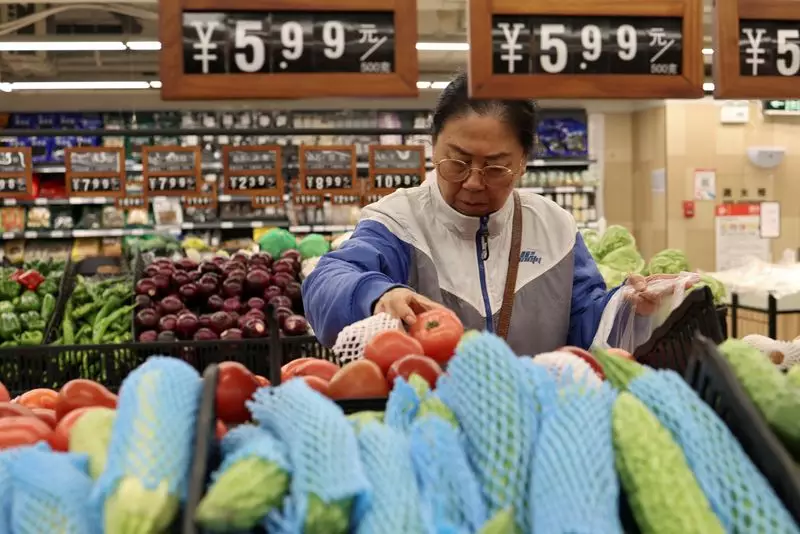Recent analyses forecast that China’s economy experienced a downturn in growth during the third quarter of 2023. Estimates suggest an annual growth rate of 4.5% from July to September, which marks a decline from the previous quarter’s 4.7% and represents the slowest pace since the first quarter of the year. This sluggish performance can be traced back to persistent weaknesses in both the property sector and consumer spending, which are creating mounting pressure on policymakers to implement drastic measures to spur economic activity.
While the Chinese government has set an ambitious growth target of approximately 5% for 2024, the current trajectory indicates that the economy may only manage a modest expansion of 4.8% next year, falling short of expectations. Furthermore, projections suggest that growth could further decelerate to 4.5% in 2025. These figures underscore a troubling trend of uneven growth in 2023—industrial production has generally outpaced consumer demand, leading to deflationary risks amid a declining property market and escalating local government debt burdens.
In light of these economic challenges, Chinese authorities have begun to escalate their stimulus efforts to support recovery. Historically, infrastructure and manufacturing sectors have taken precedence in government investment strategies. However, policymakers are now acknowledging the need to pivot toward stimulating domestic consumption as a more sustainable growth driver. Markets are eagerly anticipating the specifics of an impending fiscal stimulus package aimed at revitalizing consumer confidence and spending.
The third quarter’s growth figures will be announced alongside additional economic indicators that could reveal a mixed bag of outcomes. While retail sales may show some signs of recovery, investments are expected to exhibit a slowdown. This dichotomy highlights the precarious balance that the Chinese economy currently navigates. Furthermore, rising risks of prolonged deflation threaten to stabilize the economy even further, particularly as the prospects for exports dim—a vital sector that has shown some resilience during the year.
The latest indicators point towards a deceleration in both exports and imports, lower than the anticipated forecasts. This slowing growth is potentially indicative of manufacturers reducing prices in a bid to clear excess inventory in the face of imposed tariffs from various trade partners. Moreover, September data revealed an unexpected easing in consumer inflation and deepening deflation at the producer level. This trend not only complicates China’s economic landscape but also heightens the need for decisive action from Beijing.
Recent comments from China’s finance minister suggested a willingness to substantially increase national debt as a means of injecting vitality into the economy. Sources indicate that there could be plans to raise as much as 6 trillion yuan (approximately $842.60 billion) through special treasury bonds over a three-year period to bolster growth. The specifics surrounding these plans, however, remain vague, leaving stakeholders wondering about the actual scale of future stimulus efforts.
Meanwhile, the central bank has introduced its most substantial monetary policy measures since the onset of the COVID-19 pandemic, signaling an urgent need to support both the real estate and stock markets. These measures include interest rate cuts and substantial liquidity injections. Economists predict that the one-year loan prime rate may be reduced by 20 basis points, accompanied by a 25-basis point cut in the banks’ reserve requirement ratio by the end of the year.
As China navigates its way through these tumultuous economic waters, the trajectory remains uncertain. With a government focused on stabilizing growth while reinforcing fiscal and monetary policies, stakeholders must remain vigilant. The potential long-term impact of the property sector’s downturn and the consumption slump cannot be underestimated. While hopes are pinned on future stimulus packages to drive growth, the brimming challenges of deflation and fluctuating consumer sentiment will likely necessitate further intervention and adaptation in policy responses.
China’s economic landscape is undergoing critical transformations, and the coming months will be pivotal in determining whether the country can establish a sustainable recovery or continue to grapple with systemic challenges that threaten its economic stability.

